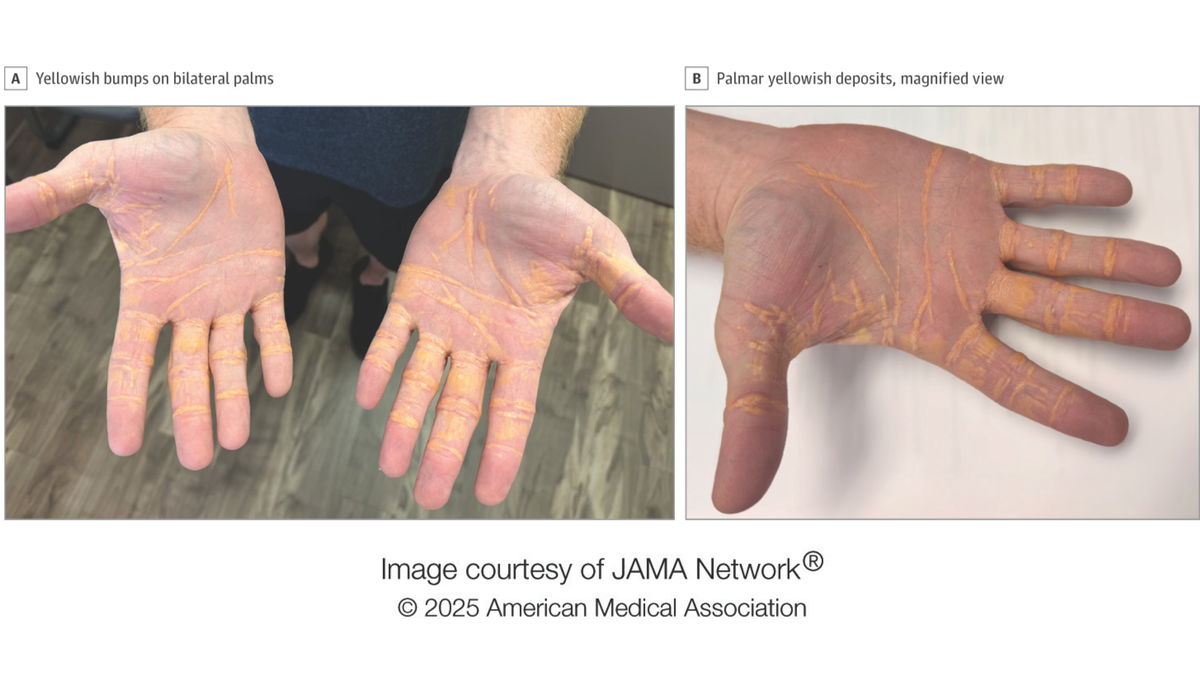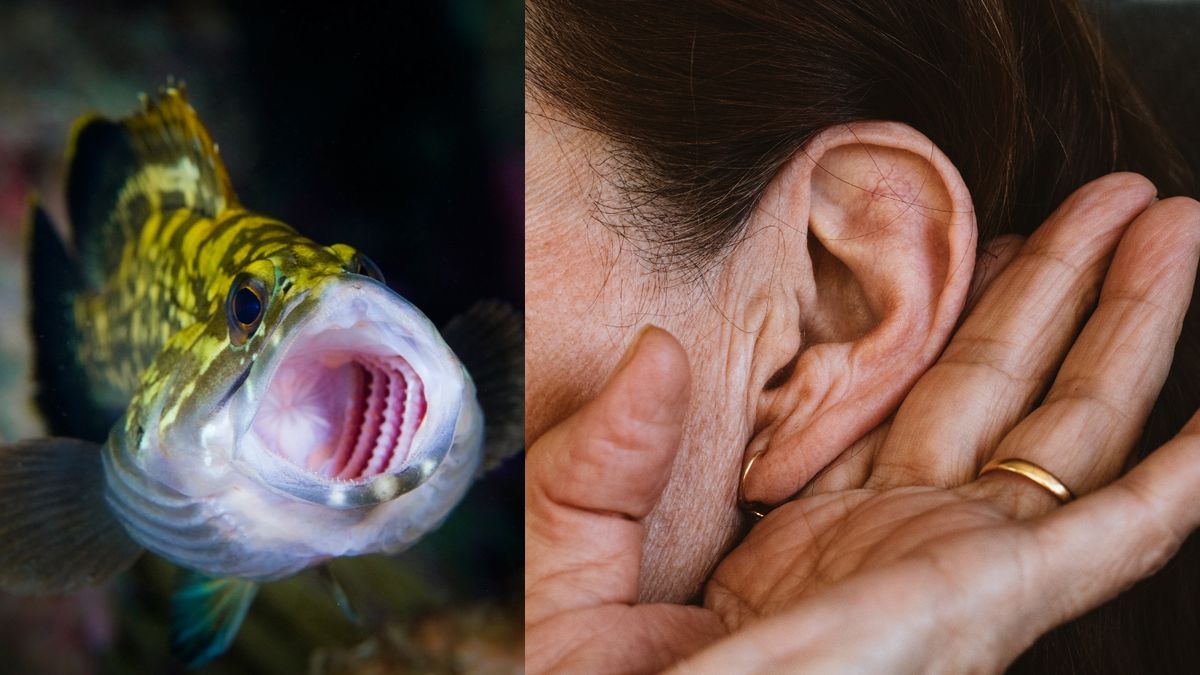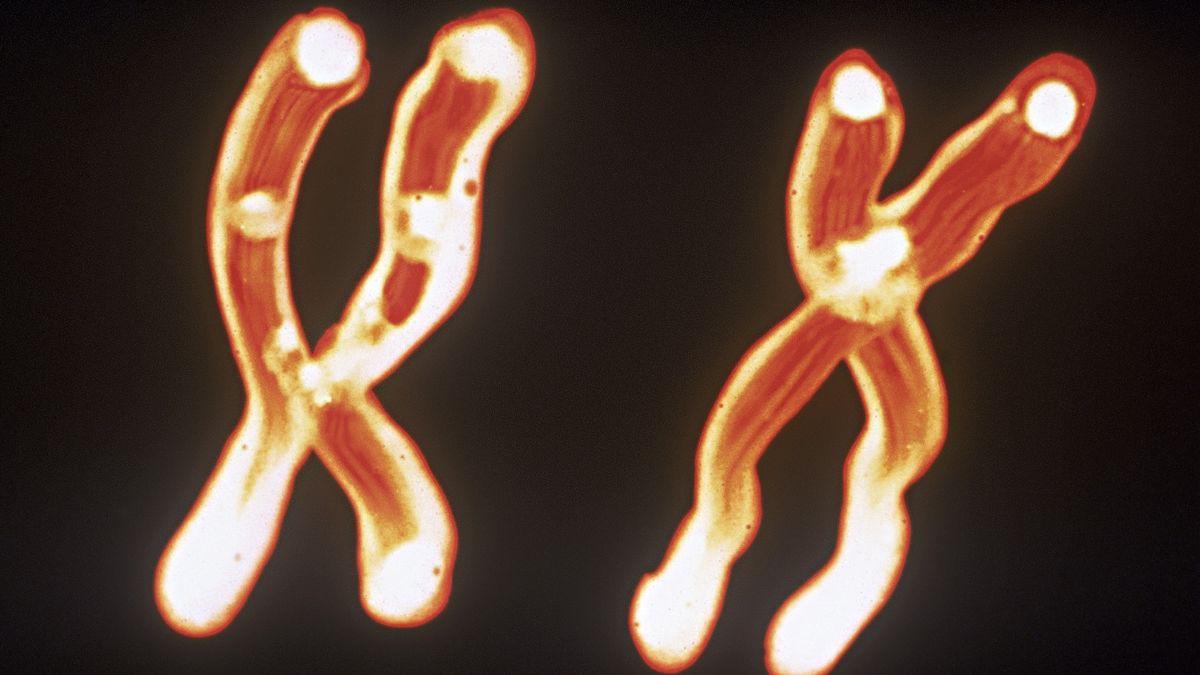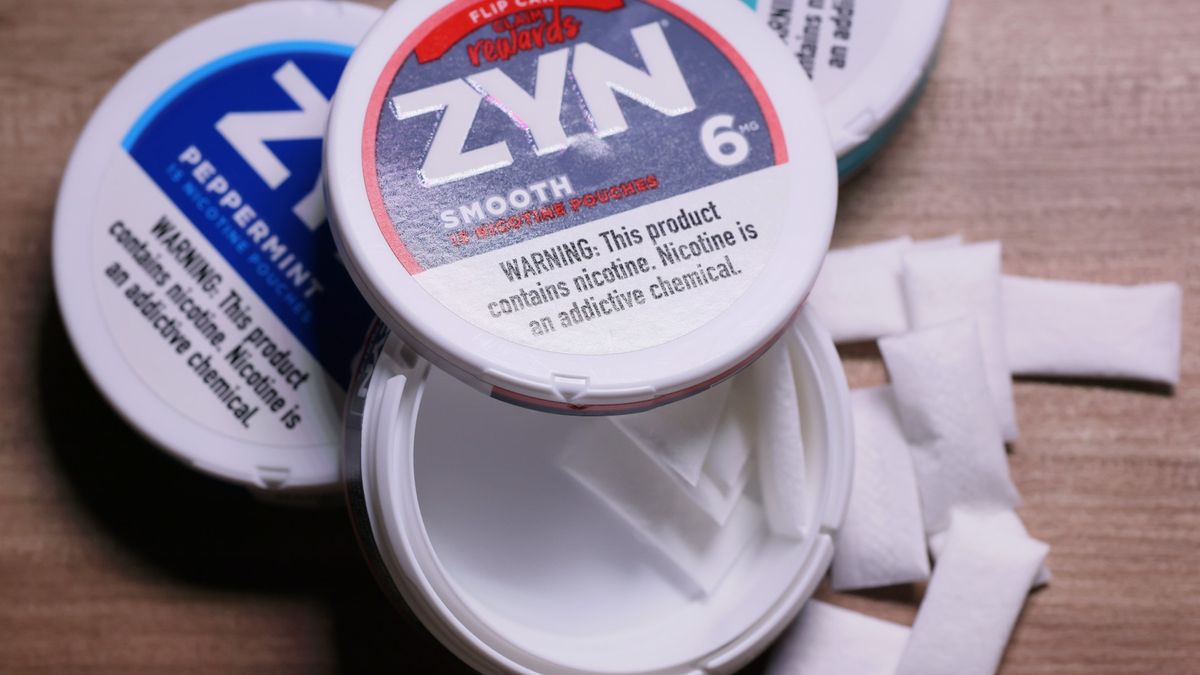In a rare case, a man’s “carnivore diet” caused large, yellow bumps to grow from his hands, feet and elbows.
A so-called carnivore diet typically involves restricting what you eat to food that is high in animal proteins and fats, such as meat, poultry, eggs and fish. For eight months before his symptoms appeared, the man had been consuming a high amount of fat in his diet. Doctors involved in his case described how his dietary habits included a “high intake of fats, consisting of 6 to 9 lb [pounds, or 3 to 4 kilograms] of cheese, sticks of butter, and additional fat incorporated into his daily hamburgers.”
This diet caused the amount of cholesterol in the man’s blood to skyrocket to more than 1,000 milligrams per deciliter — almost four times higher than his usual levels of 210 to 300 mg/dL, the doctors reported.
Consequently, the man, who was in his 40s, developed a skin condition known as xanthelasma, in which harmless, yellow deposits of cholesterol build up under the surface of the skin. The bumps can be either soft, chalky or semi-solid in form, and they can emerge anywhere in the body but are most commonly found in the elbows, joints, tendons, knees and hands.
If the bumps specifically form near the eye or on the eyelid then the condition is referred to as xanthelasma palpebrarum.
Related: Man developed a ‘headspin hole’ after years of breakdancing, case report says
An image included in the man’s case report, published Jan. 22 in the journal Cardiovascular Images, shows large yellow bumps appearing to ooze out of the creases in the skin on the palms of his hands. Doctors wrote that the man also had similar bumps on the soles of his feet and on his elbows, all of which were painless and had been growing for around three weeks before he sought medical attention.
Xanthelasma, which affects around 1% of people, in itself is not a dangerous condition. However, it can flag that someone is at a high risk of developing more serious ailments in the future, some of which can be deadly. For instance, high levels of cholesterol in the blood can clog up the blood vessels that supply the body’s vital organs, potentially leading to a stroke or heart attack.
Around half of patients with xanthelasma have abnormally high cholesterol levels in their blood, often caused by genetic conditions they inherited from their parents, according to the medical resource StatPearls. Other conditions, such as diabetes and having an underactive thyroid, may also contribute to the development of the disease in some cases.
Often, doctors will advise patients with xanthelasma to take steps to lower their blood cholesterol levels, which may include consuming less fat in their diet and taking cholesterol-lowering drugs, such as statins.
Making these moves may prevent the formation of future bumps on the skin, but they won’t cause any bumps that have already emerged to disappear. If patients wish to have these bumps removed, for example for cosmetic reasons, they can opt for surgical removal or the lumps can be frozen off using liquid nitrogen.
This article is for informational purposes only and is not meant to offer medical advice.















